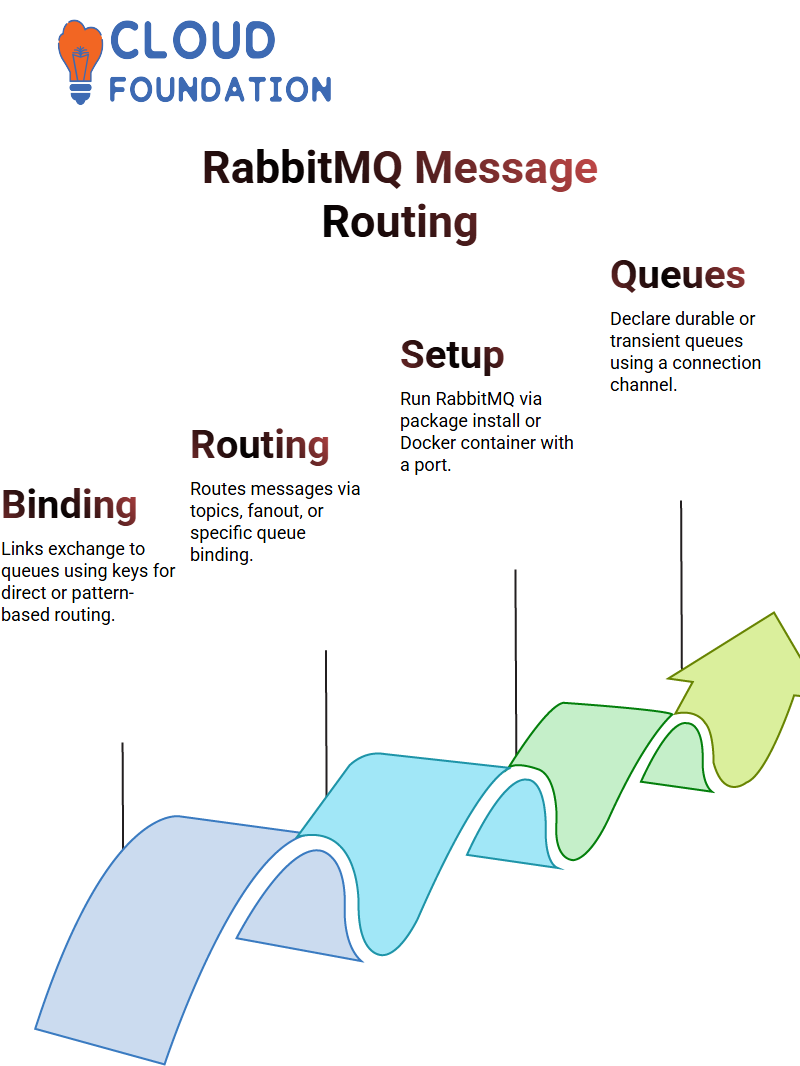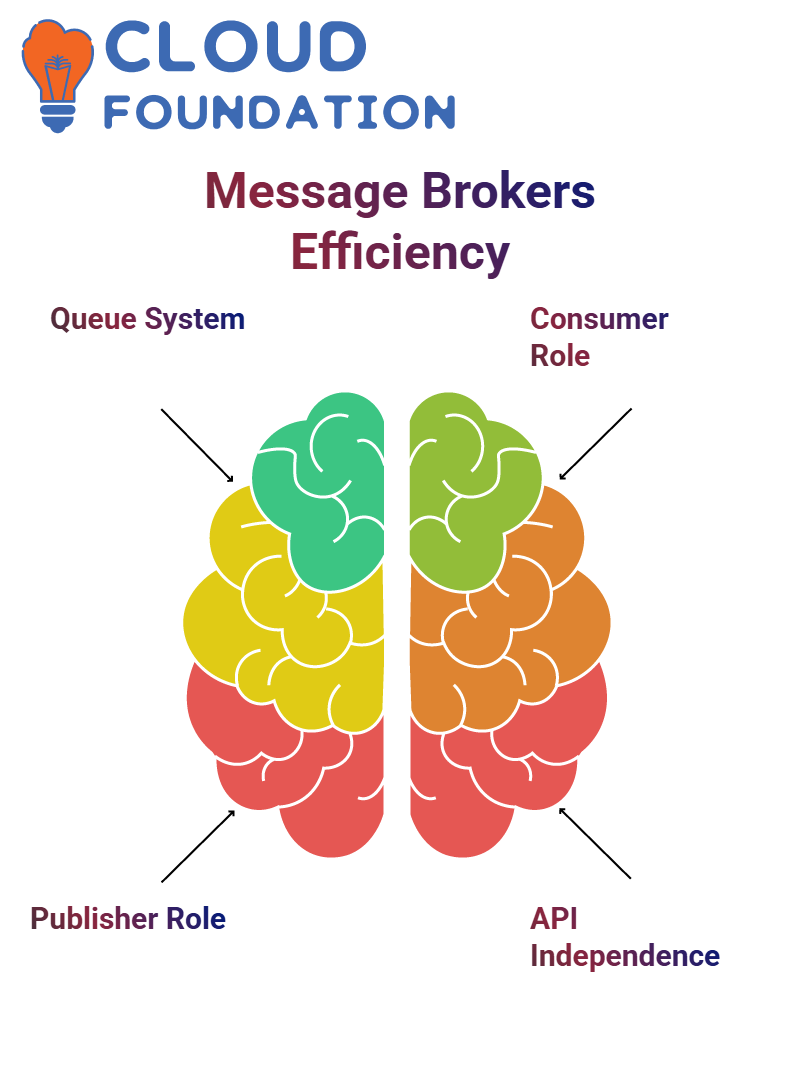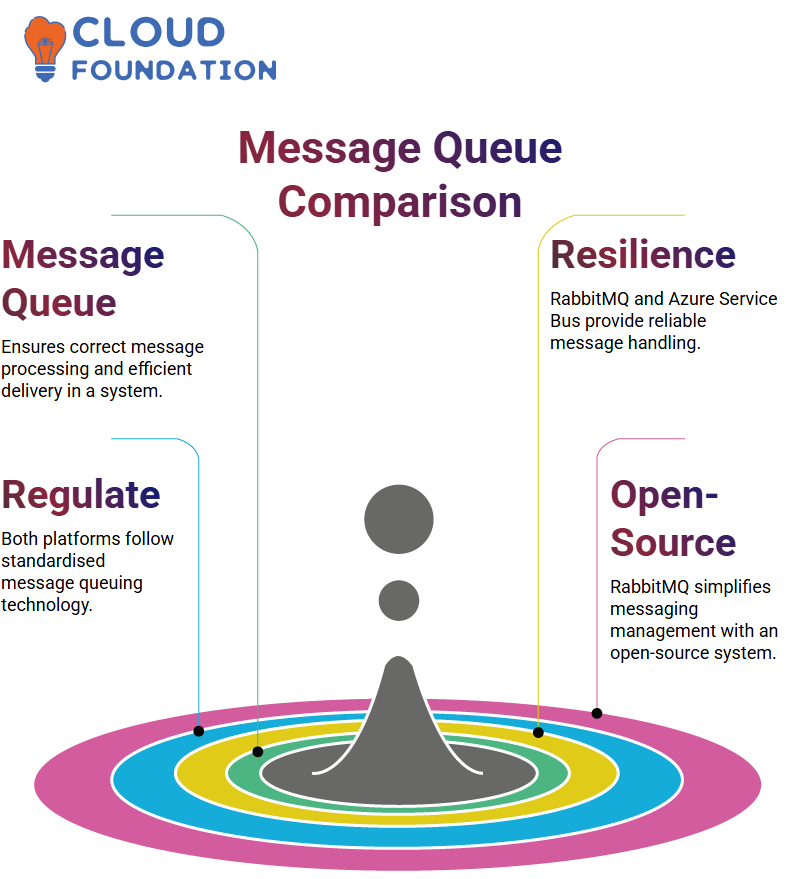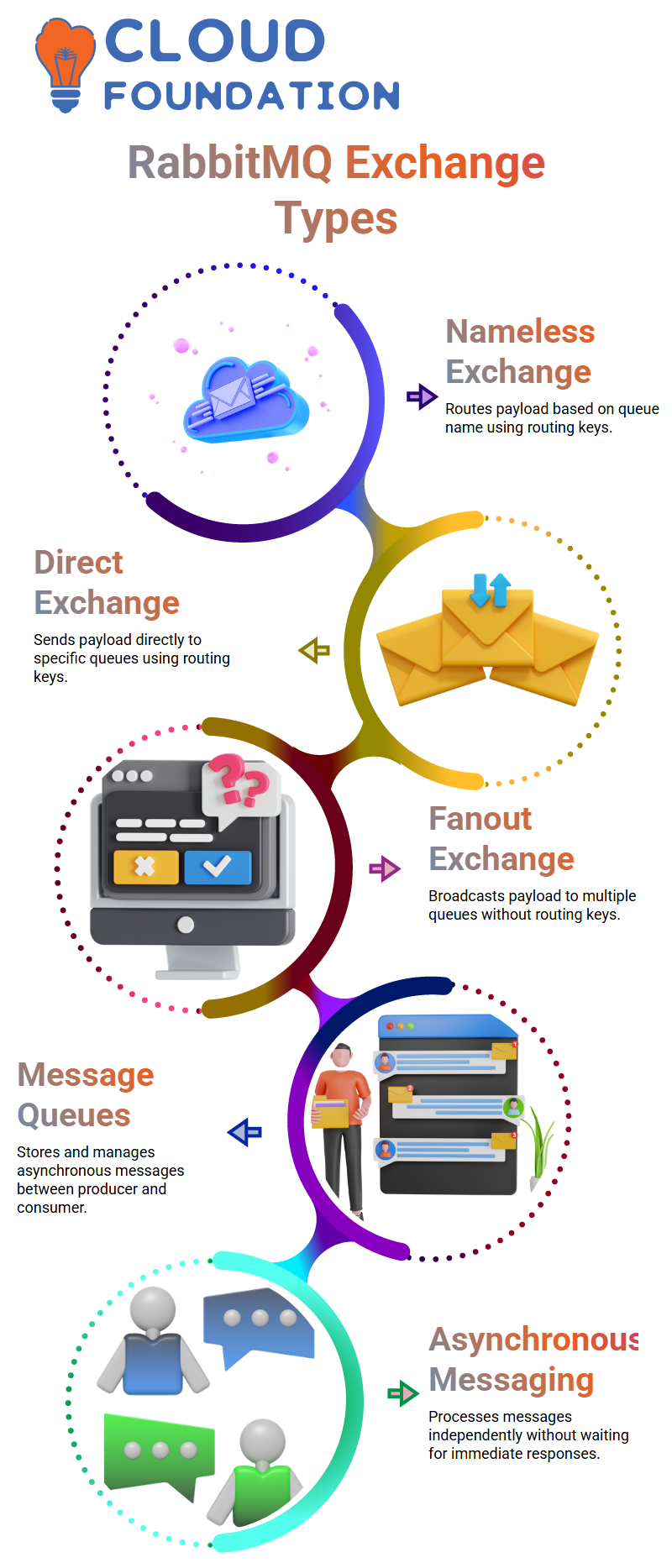What is RabbitMQ?
What Is RabbitMQ?
RabbitMQ is an effective message broker designed to build robust and scalable applications. With flexible message movement capabilities and cloud compatibility features such as flexible message metadata support and flexible message movement policies.
RabbitMQ is an innovative message broker used in retail applications. It facilitates communication between two services and offers flexibility regarding exchanges, routing keys, and messaging through its system.
Implementing RabbitMQ allows retailers to streamline processes, increase scalability and optimise overall performance.
Understanding RabbitMQ and Its Protocol
RabbitMQ is an application-layer protocol that enables developers to communicate with other applications on a network. It serves as a set of rules governing communication among different application components.
RabbitMQ is an ideal protocol choice for developers and is widely utilised across various applications. However, variations between versions should be expected and explored later.
One key to understanding RabbitMQ lies within its architecture and mechanism. Developers frequently utilise RabbitMQ. MM
RabbitMQ is an application-layer protocol; therefore, it’s essential to understand its basic concept and use case before exploring it further.
RabbitMQ Binding, Routing, and Queue Management
The architecture supports binding and routing keys that enable exchange to route directly to one queue or multiple queues, use shared patterns across topics, or fan out.
RabbitMQ provides servers with an architecture for publishing and subscribing to data. When installed or run within a Docker container using port numbering, each package includes CLI tools for managing and inspecting its broker.

Create your file on any desired server using Create Connection, then Channel Method to connect to RabbitMQ, and then the Channel Method to define your queue(s). Give each queue its unique name and durability level: durable for long-term data storage or transient, where data only stays within memory for short time frames.
Role of Networking in RabbitMQ Architecture
RabbitMQ is an inbound message broker running on one computer. Its various components combine to form its architecture, independent of any programming language. The message passes through multiple layers to decode into its top application layer before reaching its target destination. It relies heavily on networking for proper function.
RabbitMQ server boasts various scores written upon it to respond to connection requests from multiple computers, making it an essential prerequisite to understanding rabbit-ear architecture.
RabbitMQ server features various functionalities enabling users to compose messages efficiently at various application layer stages.

These messages contain details regarding the components the map expects from its users, such as an application layer with headers.
The RabbitMQ server employs various components to facilitate efficient communication and performance, including its application layer, which manages application layer data and its presentation layer data.
Addressing Notification Delays in Microservices with RabbitMQ
A lack of asynchronous communication within these microservices often results in poor user experiences due to delayed notifications for customers, which could take as much as 10 seconds! This delay causes frustration for users. Luckily, RabbitMQ can address it.
Delays in message delivery may occur for various reasons, including Twilio issues or Firebase incidents.
Delays may range from instantaneous to delayed, depending on whether a customer receives notification through SMS and registers in the fraud prevention system.
Implementing asynchronous communication protocols is one solution to increasing microservice communication efficiency.
As mentioned above, microservices enable faster response times and improved overall performance. Another approach is implementing asynchronous communication protocols like RabbitMQ in microservices to speed up customer notifications.
The Role of Message Brokers in Efficient Messaging
A message broker is a process with an internal data structure called a queue that helps send and receive messages between different servers.
In this scenario, a message broker serves as both publisher and consumer; one server being an initiator while the other acts as the recipient of messages delivered from one to the other via a queueing system; later delivered back out and inputted by the service to our PCs or APIs for processing purposes.
The entire communication process happens this way, using a message broker as the primary mediator between services and consumers/producers/publishers of messages sent between services through message brokers as a direct connection without APIs being involved!

Recipe pages may not always be reliable, and their effectiveness often hinges on whether or not the HTTP protocol is available. Therefore, message brokers provide more effective communication between servers, guaranteeing messages are sent and received effectively.
The HTTP protocol is essential in communication processes and integral in assuring the reliability and effectiveness of message brokers. It ensures efficient and reliable communication among multiple servers.
Setting Up a Test Exchange and Queue in RabbitMQ
Exchange types are tracked, while their durability cannot be assured by default. No internal arguments exist against it; exchanges are created through right-click sections in the “Exchanges” tab with no bindings attached.
Exchange can publish messages both to and from it, as well as delete existing ones.
Creates and connects a queue to an exchange on the Queues page.
This queue should be considered temporary but durable for application implementation processes involving adding queues to exchanges as part of your application implementation strategy and ensuring they can receive messages.

Once an exchange has been created and its messages delivered to its queue, application development begins by implementing its contents using arguments provided by that exchange.
Implementation of an application generally entails connecting an exchange to an appropriate queue and ensuring its recipient can accept messages from that source.
Integrating RabbitMQ with Solution Explorer
Begin by creating a RabbitMQ sender in Solution Explorer and copying and pasting its client file to your project file. After pasting NuGet packages into the RabbitMQ server as a client file and the receiver as one file, they will be added directly to the receiver server.
The current version’s colors don’t correspond with anything in Solution Explorer; instead, they appear different and unsuitable for larger projects. Furthermore, when upgrading a solution, the colours no longer correspond with anything in Solution Explorer.
However, colors may prove more useful for an extensive application than demo apps; Solution Explorer recognises differences among program files by showing each color differently.
A Comparison of Message Queue Solutions in RabbitMQ and Azure Service Bus
A message queue is an essential component of the messaging system. It helps ensure messages are processed correctly, delivered on time, and reach their destinations efficiently.
Resilient message queues require message brokers like RabbitMQ for resilience and server delivery; its standardised message queuing technology, also used by Azure Service Bus, provides reliable message handling.

Service buses or queues also utilise various standardised versions, with RabbitMQ providing users access to messages similar to Azure services; Azure Service Bus serves as another type of message queue or broker.
RabbitMQ is an open-source messaging system that simplifies message management by providing a platform to accept, process, and relay various forms of data exchanged among servers and clients. It enables sending or returning specific servers or cues while seamlessly handling others.
Exploring RabbitMQ Exchange Types for Effective Payload Routing
There are different kinds of exchanges within RabbitMQ, including direct exchanges, fanout topic header exchanges and nameless exchanges.
The default exchange is a “nameless exchange,” in which its routing key equals that of its queue name. This configuration helps ensure efficient communications between producers and consumers: once a payload is submitted, it is forwarded to its intended consumer via exchange.
Producers provide routing keys, which are then used to direct the payload to an appropriate queue through binding configuration.
When a producer receives its payload, it sends it to an exchange along with its routing key. This configuration process occurs through bindings that are sent to specific queues.
Producers then submit the payload to an exchange, providing its routing key. Bindings may then be configured to route this specific queue; direct exchanges directly send the payload to the exchange, while fanout topic headers may be utilised when dealing with specific RabbitMQ topics.
Nameless exchanges use routing keys to direct their payload to specific queues.

Role of Message Queues in Asynchronous Messaging
Asynchronous messaging means producing instantaneous responses without waiting for processing times or length. This is achieved by simply sending requests without regard for their processing duration or length.
This approach does not directly connect service B with a message queue but instead utilises one as part of its solution. A message queue is a system where messages are placed into a queue before processing. An automated process receives and processes them before creating an outcome message with its associated processing resultant message.
Message queuing employs two services: A is the producer because it generates messages, while B consumes them asynchronously.
Benefits of Asynchronous Messaging with RabbitMQ
By adopting an asynchronous messaging model, Service A can continue operating without concern about processing time or message length issues.
RabbitMQ is an open-source message broker offering many advantages, including decoupling services from each other and faster message processing; sending multiple consumers notifications of message updates simultaneously; and delegating administration duties between numerous message recipients.
The main advantage is asynchronous communication capabilities; this feature enables creating network packets for each service request and creating requests on demand for more efficient code writing performance and efficiency.
RabbitMQ also excels at sending messages faster than they can be consumed, enabling faster scaling of backend consumers and catering to larger volumes. By producing many more messages than consumers can consume quickly enough, RabbitMQ provides ample capacity for handling massive volumes of communication traffic efficiently and swiftly.
Another key system feature is RabbitMQ’s ability to distribute messages to multiple consumers using batching. Asynchronous messaging offers message queuing and acknowledgement services and is also integral to its functionality.
However, delivery acknowledgement offers another unique feature to ensure messages don’t depend directly on one another. When service A submits its message into the queue for processing by service B, service B receives it and processes it further before returning it to the queue for retrieval by service A.
RabbitMQ expects service B to acknowledge receipt of its message before accepting delivery acknowledgements, thus facilitating more efficient code writing by streamlining systems more seamlessly.

Conclusion
RabbitMQ is a practical and versatile message broker for creating scalable, resilient applications with exceptional user experiences. By supporting asynchronous communication channels between services, decoupling is possible for more reliable operations that support high-performance systems requiring fault tolerance. Furthermore, its various exchange types, routing keys, and bindings allow companies to tailor complex messaging systems to individual user requirements, making RabbitMQ indispensable in microservice architectures and serverless environments.
RabbitMQ can streamline communication processes and boost system performance, decreasing dependency on synchronous interactions while increasing reliability through features like message acknowledgments and delivery guarantees. Furthermore, its open-source nature gives this messaging server another competitive edge by improving reliability.
RabbitMQ stands out among Apache Kafka or SQL Server with its exceptional message routing and fault tolerance capabilities. It uses AMQP for secure message formatting and transmission, essential to maintaining system integrity. Furthermore, its capacity for handling high volumes of messages while decreasing delays provides improved user experience and scalability, which makes RabbitMQ essential in modern distributed apps with increasing message volumes; its features make it indispensable for building resilient yet high-performing systems.

Sai Susmitha
Author



